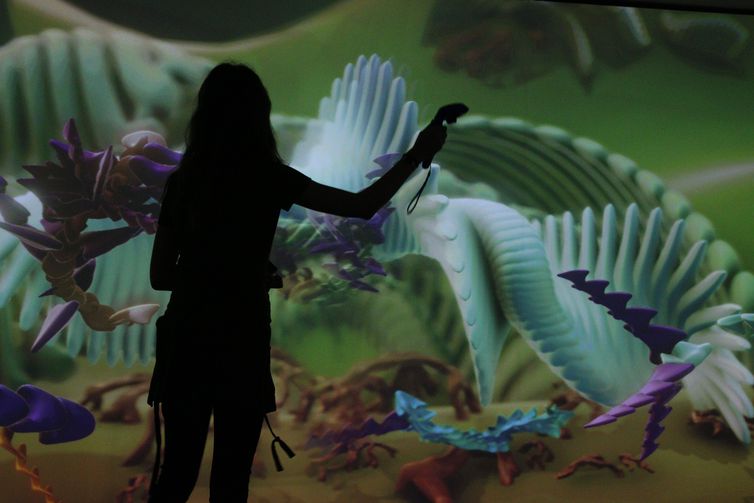RIO DE JANEIRO, BRAZIL – The connection between art, creativity, and technology is the basis of more than 230 works presented starting July 13 in another edition of the International Electronic Language Festival (File), held at the Fiesp Cultural Center, located on Paulista Avenue in São Paulo CIty.
Since it was created in 2000, File presents what is new in poetry and aesthetics of electronic art from around the world.
LIMINAL
For this year’s edition, the theme is Supercreativity, which permeates video art, animations, games, augmented reality and artificial intelligence works, and interactive installations such as Liminal, by Louis-Philippe Rondeau.

Liminal is an arch installed in the center of the exhibition space and forms a kind of temporal portal: the visitor can see his image projected on the screen by passing through this arch using a slit-scan technique.
The artist intends to work on the limit between the present and the past, creating a visual metaphor and making the visitor aware of the dilation of time and his own reflection.
Another outstanding work is Augmented Shadow: Inside, by South Korean Joon Y Moon. It is an unprecedented work in Brazil: an augmented reality experience that allows interaction with characters in virtual shadows of real three-dimensional objects such as doors, windows, and chairs.
SUPERCREATIVITY
“We are resuming [File] after almost three years of the pandemic. This edition has two fronts: an adaptation of what we had considered pre-pandemic, when [the event] did not occur. And what we were able to put together with what we think is happening now.

“Initially, we had worked on an event all connected to artificial intelligence. But Supercreativity works precisely on the issue of reflecting on how it exists independently from artificial intelligence itself. Artificial intelligence is just a tool, of which some works here make use,” said Paula Perissinotto, co-founder and organizer of File.
“Creativity is present not only in several works here, not only in the arts but in several areas and aspects of our society. And this is what we try to bring as a reflection here,” she added in an interview with Agência Brasil. “Visitors will find many ways to understand the use of technology as a tool for creation, not only for consumption,” she said.
#L1
Among the exhibition’s highlights is the installation #L1, by Fernando Velásquez, a work that counted with the participation of programmer Gustavo Milward. In an interview with Agência Brasil, he said that the work consists of 16 neon bars and is not interactive.

However, it is unique: each visitor who passes by it will have a different experience. According to algorithms, these neon bars will turn on or off or change the light intensity.
“It is not an interactive work. It doesn’t have sensors that capture movement, for example. But it has a logic. It is a work that will never repeat itself: it will always generate variables. A person who enters here will see one thing. Another will have another experience,” said Milward.
File also features a huge wall with 140 QRCodes. With each click, a new experience will be given to the public.
“They are 140 works arranged in QRCode, which they can see from their cell phone, with their own headset. They are works of video, digital, and sound art,” said the event organizer.
FILE LED SHOW
Outside, the very building of Fiesp Cultural Center will serve as a stage for exhibitions and projections that will happen daily for the duration of the festival.
This intervention at the Fiesp building will be seen by anyone circulating on Paulista Avenue between 7 PM and 6 AM.
The electronic art festival has free entrance and will be open until August 28. More information about the festival can be found on the website.
With information from Agência Brasil

